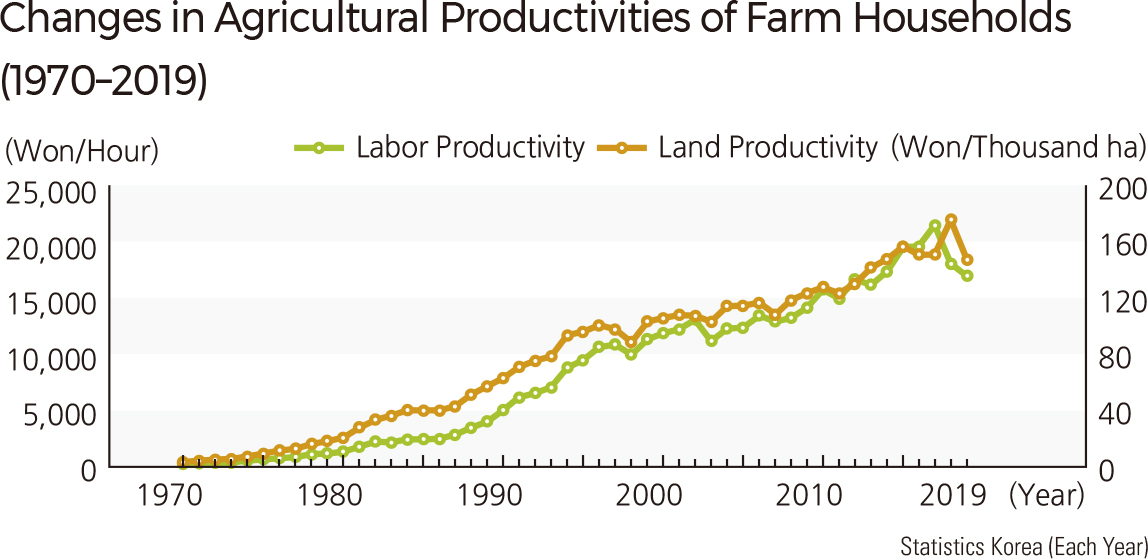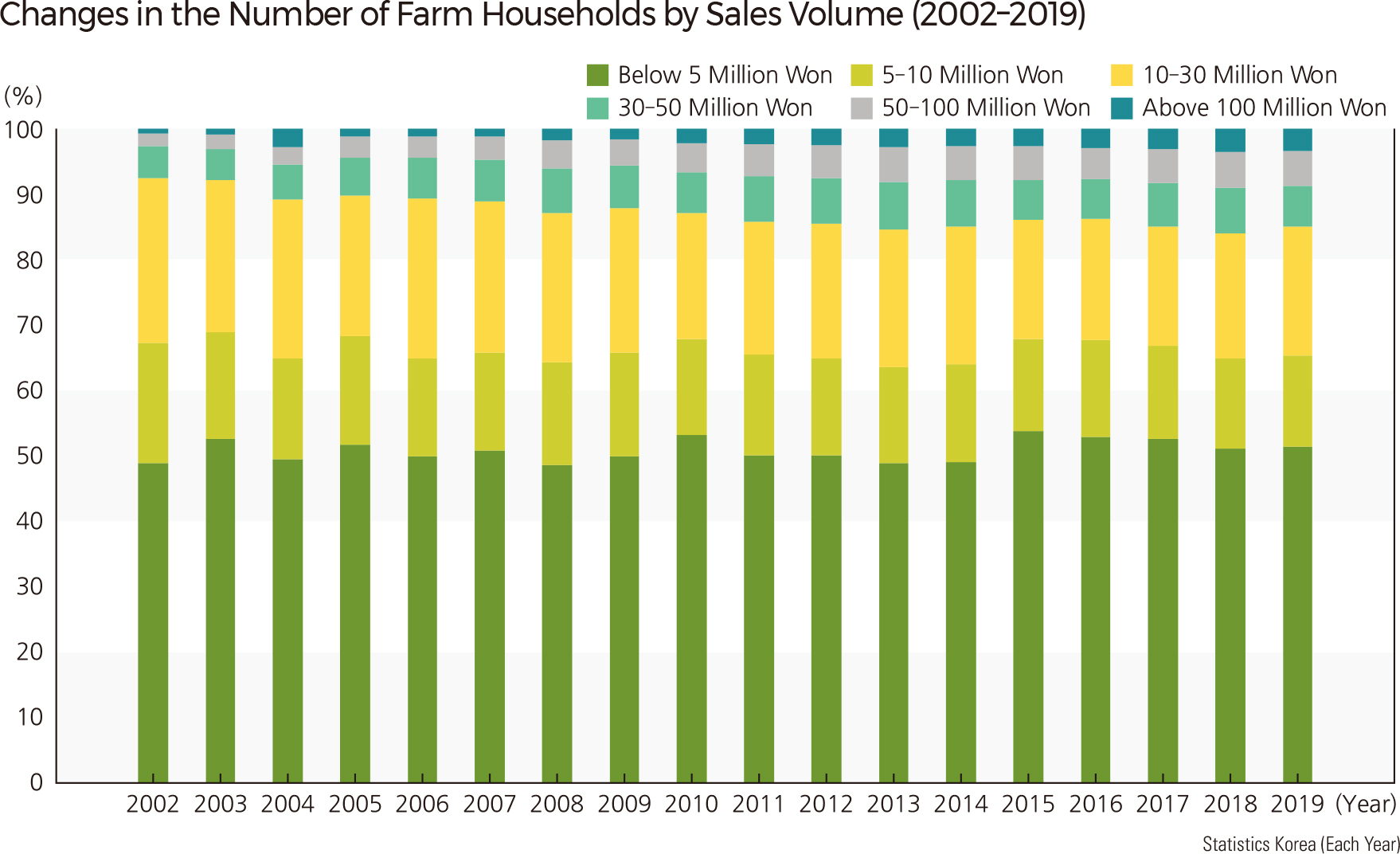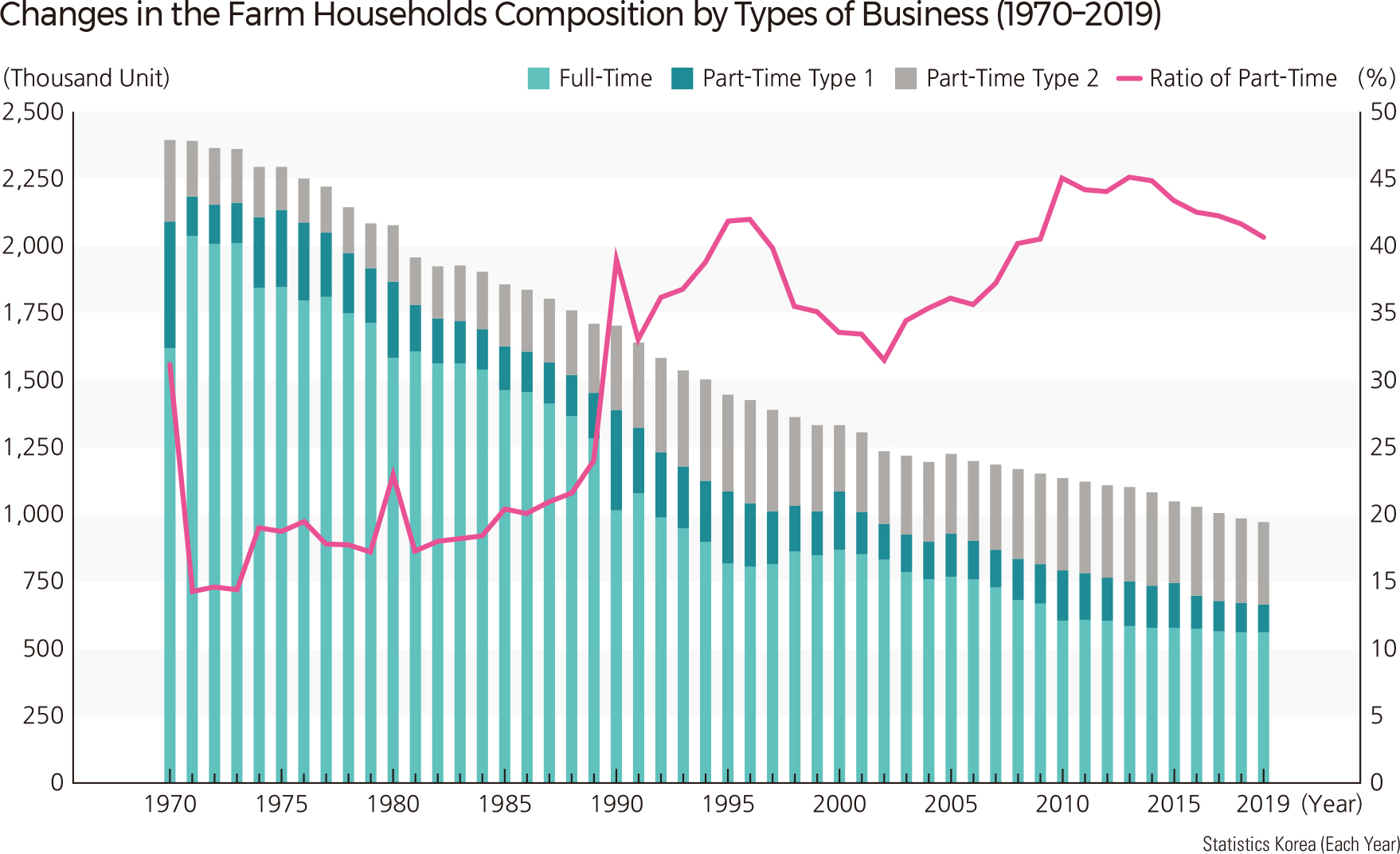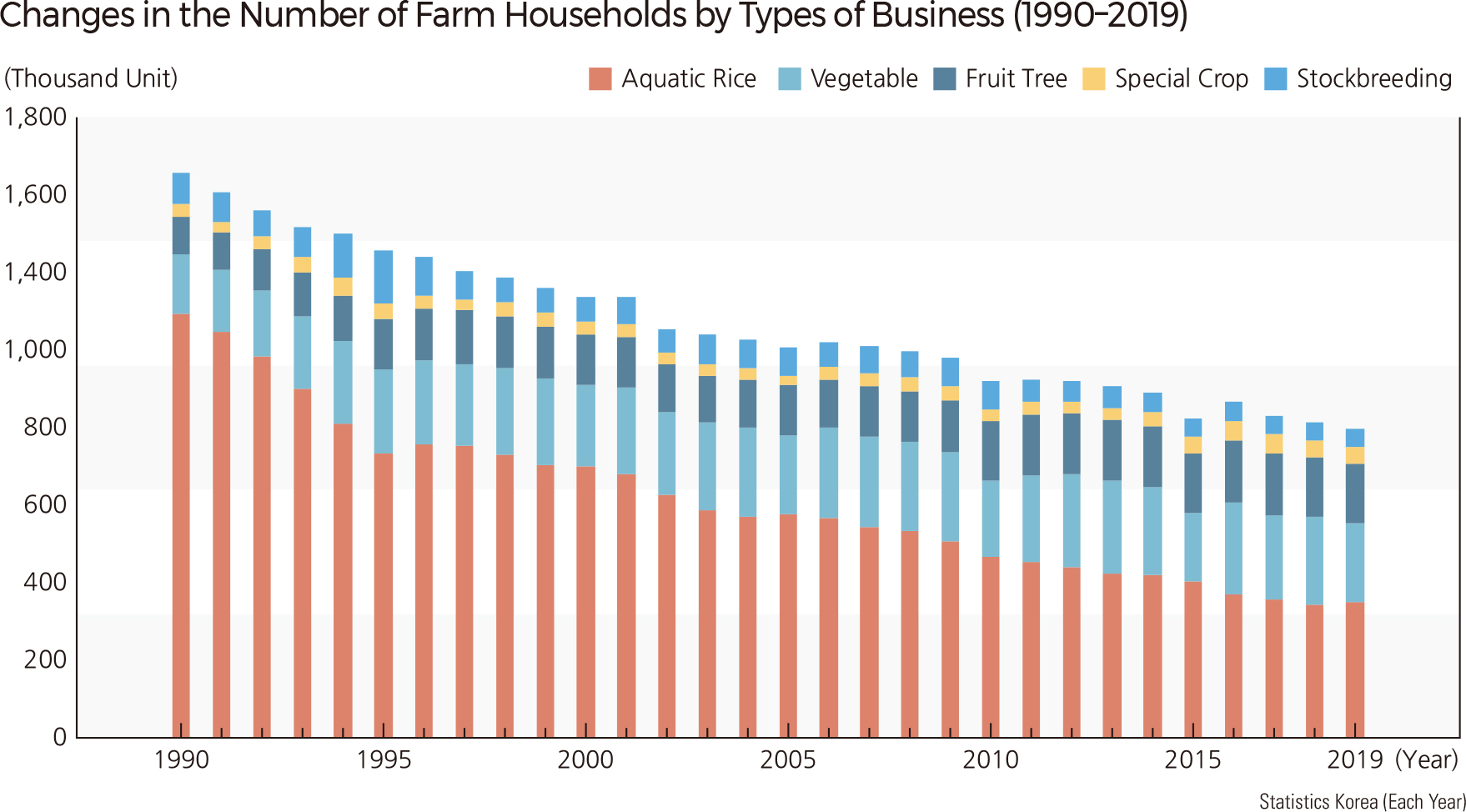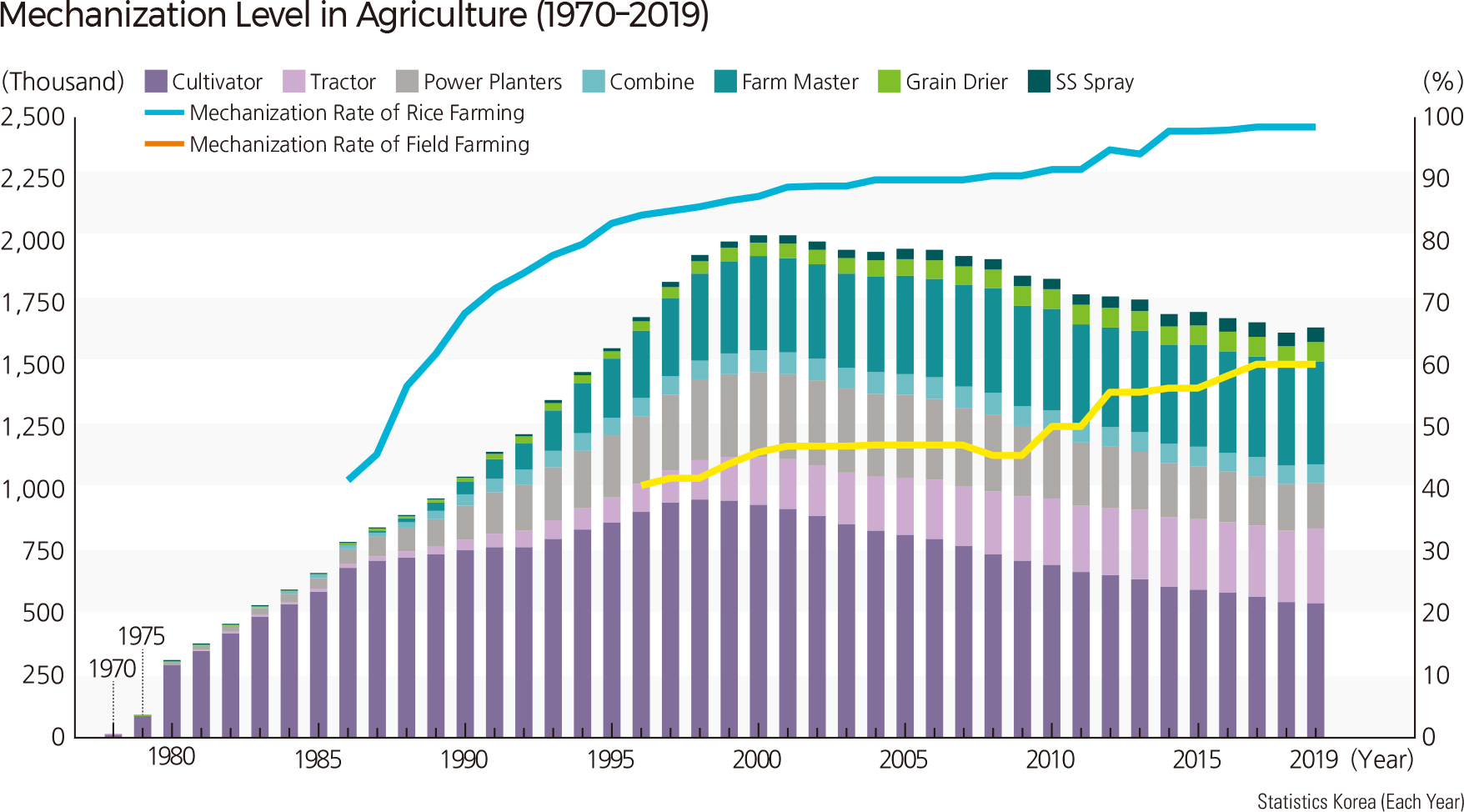English III 2021
The maps of the distributions of farm households by the types of business identify the current agricultural management features in Korea. According to the proportion of part-time farm households in the total number of farm households by region, expressed as choropleth maps, Ongjin-gun in Incheon was the highest (82.5%), followed by Anyang-si (80.5%), Osan-si (79.0%), and Bucheon-si (78.5%). According to the number of full-time farm households by region, expressed in the pie-graph map, Seoul had the highest intra-regional rate among the metropolitan cities, whereas Jeju-do had the highest intra-regional rate among the provinces. In contrast, Jeollabuk-do and Gyeongsangbuk-do were recorded as the highest and the second-highest province in the intra-regional rate of part-time farm households, respectively. The type of part-time farm households is subdivided into Type 1 and Type 2; the agricultural income of Type 1 part-time farm households is higher than non-agricultural income. In contrast, the agricultural income of Type 2 part-time farm households is lower than non-agricultural income. The farm households’ composition by types of business had changed from 1970 to 2019. The proportion of part-time farm households, which was very low at 14.8% in 1972, increased rapidly since the 1990s and reached 46.8% in 2013. Indeed, the decreasing rate of the number of full-time farm households (annual average -2.1%) is higher than that of the number of part-time farm households (annual average -1.3%) during the same period. The number of farm households by sales volume had changed from 2002 to 2019. The proportion and number of farm households with annual sales of more than 100 million won were increased. However, the polarization of farm households’ income is becoming more and more apparent, as small-scale farm households with annual sales of less than 5 million won still account for over 50%. As agricultural commercialization progressed, the number of farm households specializing in rice decreased more than that of vegetables or orchards. Thanks to the mechanization of agriculture and the development of agricultural technology, both labor and land productivities are increasing rapidly. |

